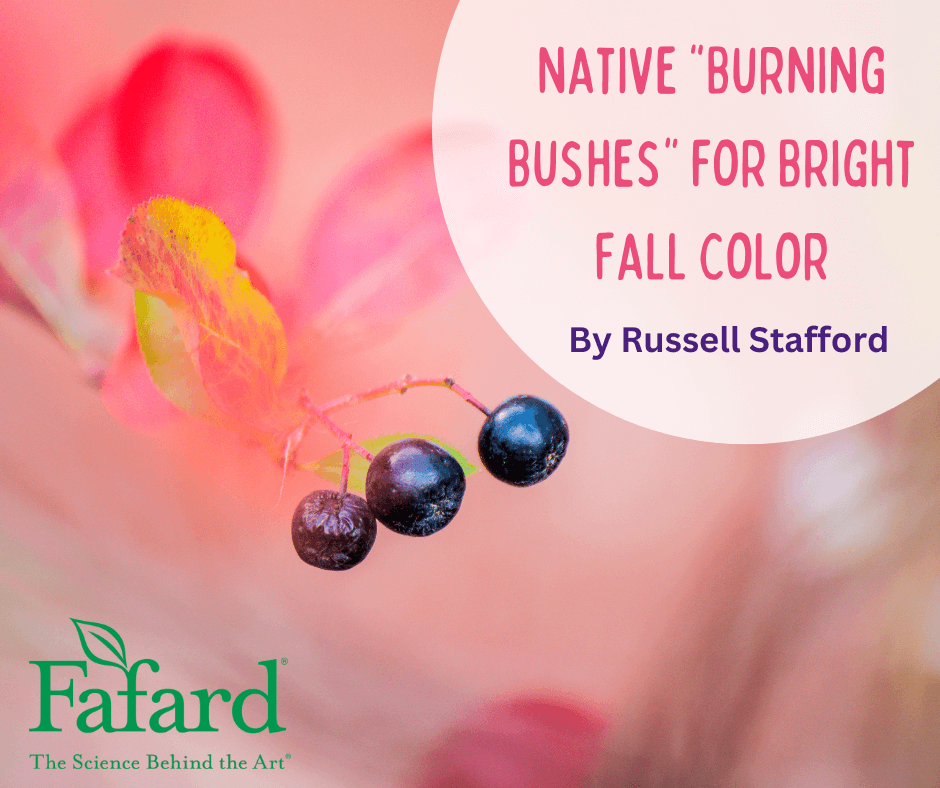
The five-alarm fall color of burning bush (Euonymus alatus) has won it a prominent place in gardens and landscape plantings throughout much of the U.S. since its introduction more than a century ago. Unfortunately, this large exotic shrub has also bullied its way into numerous natural areas, sometimes crowding out native vegetation. Its fiery, attention-grabbing fall color not only appeals to human eyes – it also signals to birds that the its berries are ripe. They come, they eat, and the next thing you know, seed dispersal happens. A lot of it.
Far better, than, to plant one (or more) of the many native shrubs that turn sunset shades in fall. You have many colorful natives to choose from.
Chokeberries (Aronia spp.)
These splendid shrubs from central and eastern North America all go aflame in fall. Black chokeberry (Aronia melanocarpa) contributes to the garden in multiple ways. Attractive white flowers in spring give rise to edible black berries in summer, which work well in jellies, preserves, pies, and the like. Then comes the fall color, which features not only searing red shades that rival those of any burning bush, but also vibrant orange and smoldering wine-red accents. All this happens on 3- to 5-foot-tall plants that take a wide range of conditions in sun or light shade. If you need a more compact shrub, there is 2-foot-tall ‘Low Scape Mound’ and 1-foot-tall ‘Ground Hug’. The larger but equally flamboyant red chokeberry (Aronia arbutifolia) is an ideal choice if you need a largeish shrub for a moist to damp niche. Its white flower clusters in spring (similar to those of black chokeberry) give rise to berries that ripen to a zappy lipstick-red in late summer. Although they are useful in jellies and other concoctions, you may want to keep them on the plant so they can show off. Hybrids between black and red chokeberry constitute a third Aronia species, A. prunifolia. Similar in flower and fall color to the above, it produces purple fruit. All chokeberries are very cold-hardy, from USDA zones 3-9. In sandier sites, mulch red chokeberry heavily with Fafard® Garden Manure Blend to retain soil moisture.

Summersweet (Clethra alnifolia)
Another native shrub with multi-seasonal interest, summersweet is best known for its fragrant bottlebrush spikes of white or pink flowers, produced for several weeks in summer. However, it is also noteworthy for its arresting pumpkin-yellow fall color. The lustrous, oblong, serrated leaves are handsome even before they turn, particularly in garden niches that somewhat mimic the moist, partly shaded habitats that summersweet calls home. Typically forming spreading 5- to 7-foot-tall clumps, this Maine to Texas native is also available in smaller forms such as ‘Hummingbird’ and ‘Sixteen Candles’. Pink-flowered varieties include the popular ‘Ruby Spice’. Hardiness is from USDA zones 3 to 9.
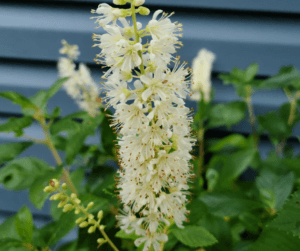
American Witch-hazel (Hamamelis virginiana)
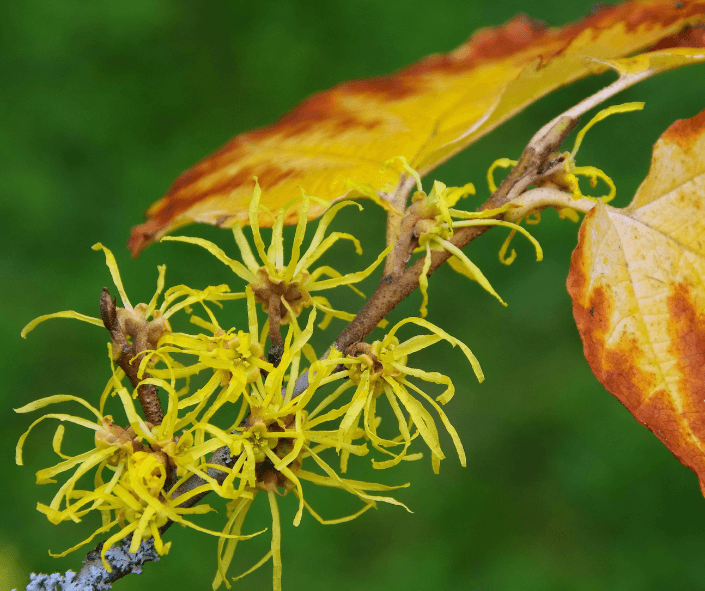
Here is a shrub that lives for fall. Not that it is not a presence in other seasons, its 10- to 15-foot-tall stems clad with beaked seed capsules in winter and handsome wavy-edged leaves during the growing season. Those leaves take on added presence in autumn, however, as they morph from green to gold. They then give way to another golden display of crinkly ribbon-petaled flowers that open along the bare branches. The more sun, the showier the bloom, particularly on larger-flowered varieties such as ‘Harvest Moon’. The variety ‘Little Suzie’ does all the above on pint-size, 5-foot-tall plants. Native to woodlands and woodland edges throughout central and eastern North America, Hamamelis virginiana is hardy from zones 3 to 9. Narrower in range is Ozark witch-hazel, found only in a few states in the south-central U.S. A dense, upright, comparatively compact shrub, it has orange fall leaves and yellow to maroon, winter-borne flowers.
Yet another large native shrub that is yellow in bloom and in autumn is spicebush, Lindera benzoin. The flowers open in earliest spring, before the fruity-scented leaves unfold. Native to moist woodlands across central and eastern North America, it handles full sun in cultivation, providing the soil does not dry out. It is especially sun-tolerant in the northern portions of its zone 3 to 9 hardiness range.
Sweetspire (Itea virginica)
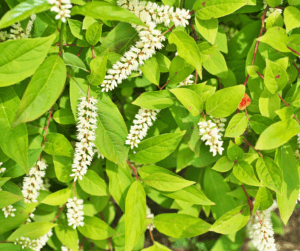
Arching, suckering clumps rather sparsely set with oval leaves produce drooping tail-like clusters of white flowers in summer, the whole somewhat resembling a dwarf weeping summersweet – until the leaves go deep-red in fall. Variety ‘Fizzy Mizzy’ has upright inflorescences. All forms of the species prefer relatively moist soil and a bit of shade, much like summersweet. It’s native from Pennsylvania to Texas, and hardy from zones 4 to 9.
Oakleaf hydrangea (Hydrangea quercifolia)
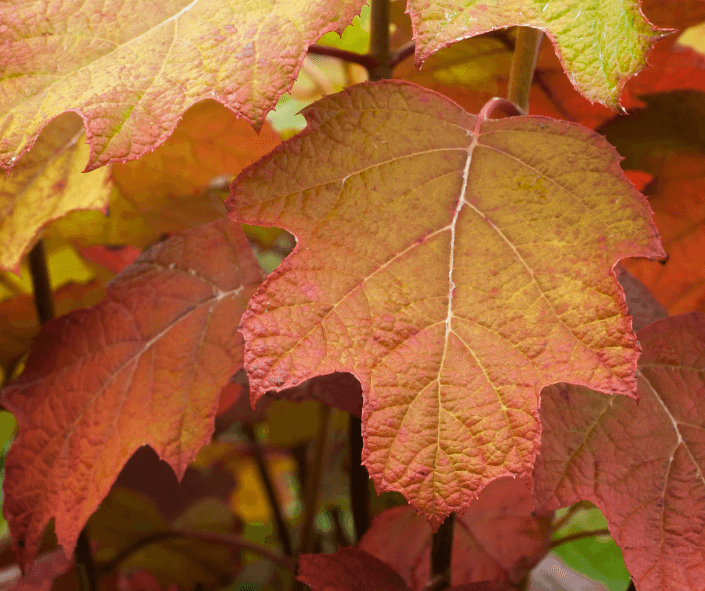
Are you keen on the burgundy autumn hues of sweetspire? Then you’ll also probably like oakleaf hydrangea, whose late-season color is of a similar glowing purple-red. Otherwise, it is a bolder plant than sweetspire, with steeples of large white flower bracts in summer and broad deeply lobed leaves that have the look of a steroidal oak. Full-sized varieties such as ‘Snow Queen’ reach 5 or 6 feet in height, while ‘Ruby Slippers’ and other compact forms top out at around half that size. All oakleaf hydrangeas sucker into thickets. Most are hardy to around zone 5 – not bad for a Southeast U.S. native.
Fragrant sumac (Rhus aromatica)
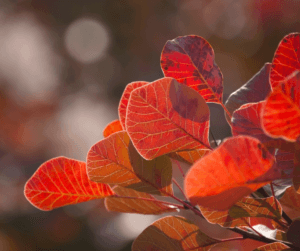
Represented in gardens primarily by the 2-foot-tall, ground-covering variety ‘Gro Lo’, this useful shrub is more than presentable but less than spectacular for most of the year. Then comes fall, when its three-parted leaves go sizzling shades of orange and red. Tolerant of most types of soil in sun or part shade, it’s rock-hardy from zones 2 to 9 – reflecting its Quebec to Texas native range.
Highbush blueberry (Vaccinium angustifolium)
White urn-shaped flowers in spring, succulent deep-blue fruits in summer, and brilliant color in fall. What more could you ask of this Northeast North American native? Other North Americans from the vaccinium tribe – including lowbush blueberry (Vaccinium angustifolium), rabbit-eye blueberry (Vaccinium virgatum), and cranberry (Vaccinium macrocarpon) – do much the same thing.

Witherrod (Viburnum nudum)
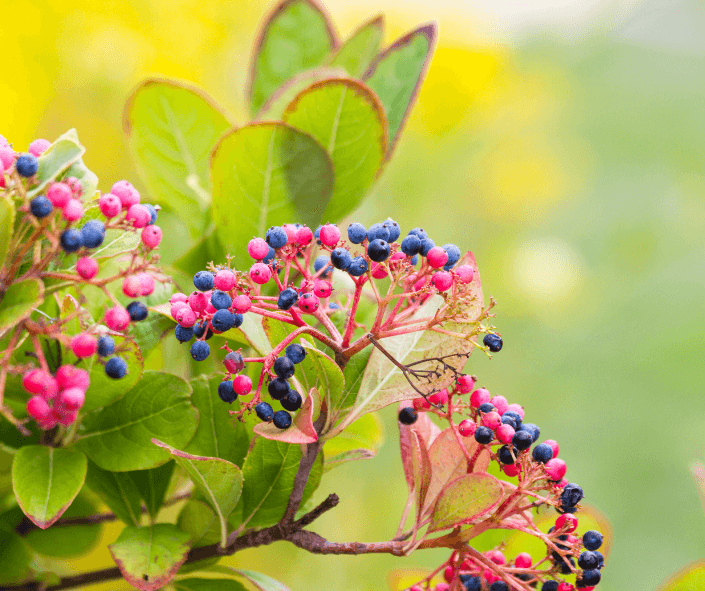
Although the blue berries of witherrod are not edible, they are more dramatic than those of the blueberries, ripening in fall as the leaves make their way from glossy green to garnet-red. The flat white flower heads in late spring are all male on some plants and all female on others, so you will need one of each sex to get fruit. Viburnum nudum is yet another native with an extensive natural and hardiness range – from Quebec to Texas and from zones 2 to 9. It is happy in just about any not-too-dry soil in sun or light shade.

